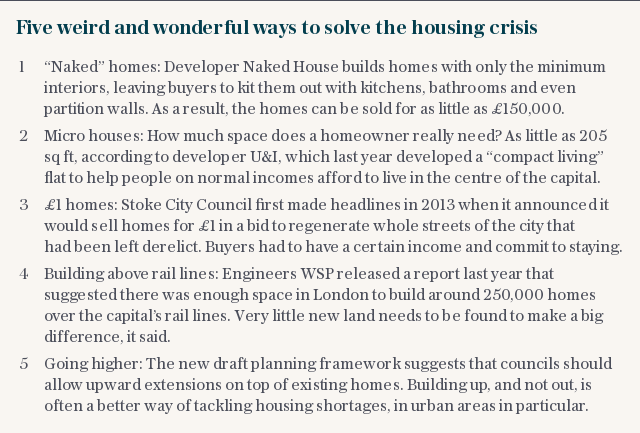Millennials don't need living rooms, says leading architect

Millennials do not need living rooms, a leading architect has said, complaining that size rules are shutting young people out of the housing market.
In a briefing paper, Patrik Schumacher, who worked on the London Aquatics Centre built for the Olympics, argued that centrally-located "hotel room-sized" studio flats are ideal for busy young people.
"Those who are now making the hard choice between paying 80 per cent of their income on a central flat versus commuting from afar, will in the liberalized future appreciate new options and perhaps choose to pay only 60 per cent for a smaller but more central flat.
"For many young professionals who are out and about networking 24/7, a small, clean, private hotel room-sized central patch serves their needs perfectly well," he said.
The most central homes should be given to people "whose productive lives are most enhanced by being thus positioned, i.e. those who operate at the centre of our network society, attending early morning meetings, after work networking events,weekend conferences, and professional lectures", he said.

Mr Schumacher argues in the paper published by the Adam Smith Institute that the minimum size of 38 square metres on newbuild flats is "paternalistic" and stops poorer young people from getting on the housing ladder.
He said: "Units half that size, built at an earlier time, are rare and thus at the moment overpriced, hotly desired commodities, for rent or for sale.
"Lifting this prohibition would allow a whole new (lower) income group, which is now excluded, to enter the market. This move would both boost overall unit numbers and affordability."
Any suggestion that smaller homes should be allowed means the debate "becomes quickly emotional and rhetorical with phrases like 'rabbit hutches' and 'slums' standing in for arguments", he added.
He also argued against restrictions imposed by local planning authorities which dictate the types of flat which must be built in a particular development, as well as regulations such as minimum room sizes, building heights and building outlines.
He said planning regulations have been "unduly politicised and thereby paralysed".

In 2016 the controversial architect told an audience at the World Architecture Festival in Berlin that public spaces such as streets and parks in London should be privatised and social housing should be abolished.
Dan Wilson Craw, of campaign group Generation Rent, said the group would welcome some changes to planning restrictions to "get homes built" but that building lots of small flats would risk "tearing up communities" by replacing larger family homes with individual units.
"Do we want to have a completely shifting society in our big cities where everyone is a pay cheque away from losing their home and people are having to move very quickly and there's no chance of developing a sense of community?" he said.

Sophie Jarvis, a policy adviser at the Adam Smith Institute, said: “Millennials already know that they are at a massive disadvantage to their parents in terms of getting on the housing ladder.
"What they don’t know is that rent caps and restrictive planning laws are holding them back, not helping them out. Liberalising planning laws, however, could get them on that ladder.
"The best example of this is if developers were allowed to build smaller houses, millennials could live in a compact, ergonomic flat in Zone 1 or 2, instead of a run-down, cold flat in at the end of the Central line or half-way to Hull."

 Yahoo News
Yahoo News 
